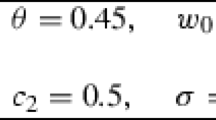Abstract
The authors propose the simplest model of the taxation management system, the methodological basis of which is the Fredholm integral equation of the second kind and the naturally occurring boundary conditions related to it, which allow us to distinguish a single solution from a two-parameter system of solutions. The model takes into account a concentrated lag, that is, a delay, an excessive increase of which delays investment tax flows into the economy, which reduces its flexibility and turbulence of cash disbursement. The authors justifiedthe role of artificial intelligence (in simple cases, robotics) for a global (integral) model that reflects the process of tax collection, focused on minimizing “arrears”, that is, those funds that could become taxable, but, for various reasons, did not become them. The result of the work is the study of a mathematical model of the tax management system. Two methods (exact and approximate) are proposed to solve the Fredholm integral equation which is a formalization of the process under study.
Access this chapter
Tax calculation will be finalised at checkout
Purchases are for personal use only
Similar content being viewed by others
References
Alhawamda, H., Taib, B.M., Eshkuvatov, Z.K., Ibrahim, R.I.: A new class of orthogonal polynomials for solving logarithmic singular integral equations. Ain Shams Eng. J. 11(2), 489–494 (2020)
Bulnes, F. (ed.): Recent advances in integral equations. London: IntechOpen (2019)
JabariSabeg, D., Ezzati, R., Maleknejad, K.: A new operational matrix for solving two-dimensional nonlinear integral equations of fractional order. Cogent Math. 4(1), 1347017 (2017)
Jafari, H.: A new general integral transform for solving fractional integral equation. J. Adv. Res. 25, 205–216 (2020)
Korn, G., Korn, T.: Handbook of mathematics for scientists and engineers. Nauka, Moscow (2007)
Maleknejad, K., Rashidinia, J., Jalilian, H.: Convergence analysis of non-polynomialspline functions for the Fredholm integral equation. J. Comput. Math. 97, 1187–1211 (2020)
Malykhin, V.I.: Economic - mathematical models of the taxation system.Voronezh: IMMiF (2008)
Mihlin, S., Smolnitsky, X.: Approximate Methods for Solving Differential and Integral Equations. Nauka, Moscow (1965)
Parshikova, G., Silaev, A., Perfilyev, A.: Fredholm linear integral equations of the secondkind in an application to economics. Innov. Invest. 9, 162–169 (2020)
Parshikova, G., Silaev, A.: Integro-differential good model and economic dynamics. Innov. Invest. 1, 140–144 (2021)
Ternovsky, V.A.: Mathematical models of the taxation for the various classical economiccircuits of industrial and market activity. Bull. VSU Ser. Econ. Manag. 2, 330–335 (2011)
Yuldashev, T.K.: On the solvability of a boundary value problem for the ordinary Fredholmintegro-differential equation with a degenerate kernel. Comput. Math. Math. Phys. 59, 241–252 (2019)
Author information
Authors and Affiliations
Corresponding author
Editor information
Editors and Affiliations
Rights and permissions
Copyright information
© 2022 The Author(s), under exclusive license to Springer Nature Switzerland AG
About this paper
Cite this paper
Silaev, A.A., Parshikova, G.Y., Perfiliev, A.A. (2022). Model of the Tax Management System in the Conditions of Cash Turbulence. In: Ashmarina, S.I., Mantulenko, V.V., Vochozka, M. (eds) Proceedings of the International Scientific Conference “Smart Nations: Global Trends In The Digital Economy”. Lecture Notes in Networks and Systems, vol 397. Springer, Cham. https://doi.org/10.1007/978-3-030-94873-3_16
Download citation
DOI: https://doi.org/10.1007/978-3-030-94873-3_16
Published:
Publisher Name: Springer, Cham
Print ISBN: 978-3-030-94872-6
Online ISBN: 978-3-030-94873-3
eBook Packages: Intelligent Technologies and RoboticsIntelligent Technologies and Robotics (R0)




